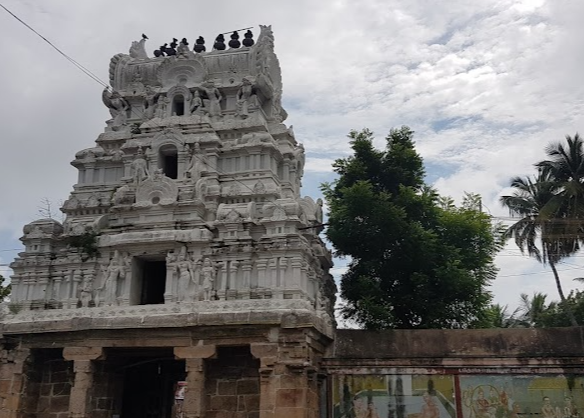Origin/History :-
The original temple likely existed before the 7th century, as it is mentioned in hymns sung by Sundarar in praise of Lord Shiva. The temple underwent reconstruction during the Chozha period and was further extended during the Nayaka period.
Inscriptional evidence from the temple is attributed to the Chozhas, although these inscriptions are in a damaged condition. During the reign of Kulothunga Chozha, Lord Shiva was referred to as “Thirumandaliyudaya Mahadevar.”
Puranic Significance :-
- Sundarar Regains Vision
Saint Sundaramurthy Nayanar once violated a promise he made to his second wife, Sangili Nachiyar, vowing never to part from her. However, he desired to see his first wife, Paravai Nachiyar, and journeyed to Thiruvarur. As a consequence of breaking this promise, he lost his vision.
Determined to regain his sight, Sundarar embarked on a pilgrimage to various Shiva shrines, praying for restoration. In Kanchipuram, Lord Ekambareswarar, at the behest of his consort, Sri Kamakshi, blessed him with sight in his left eye.
Continuing his journey to Tiruvarur, Sundarar prayed to Lord Shiva to restore vision to his right eye. Lord Shiva instructed him to bathe in the tank located in the northeast corner of the temple and worship Him there. Following this divine guidance, Sundarar regained his sight through the grace of Lord Shiva. This miraculous event is commemorated by the eye symbol that appears on the deity during abhishek (ritual bathing) times.
- Durvasa Nayanar
According to local history, this temple was once a sand temple submerged under the sea. When the tides threatened to engulf the world, the Devas and Sages sought refuge at the feet of Lord Shiva. In response, the Lord instructed Sage Durvasa to dig a tank at the Agni corner (southeast corner of the land) and to offer prayers there.
Sage Durvasa led the devotees in fulfilling the Lord's command and performed the necessary rituals. Moved by their sincere prayers, Lord Shiva absorbed the wrath of the sea, saving the world from destruction. As a result of this worship by Sage Durvasa, the Lord is also known as Durvasa Nayanar.
